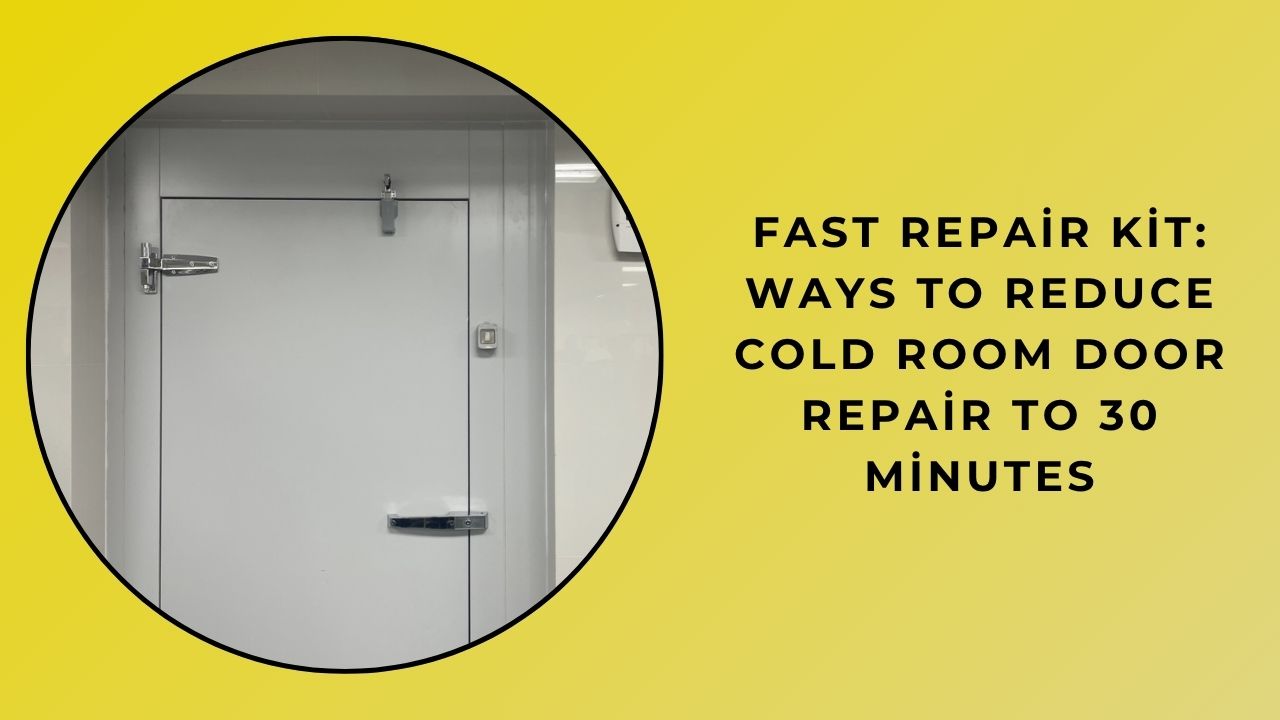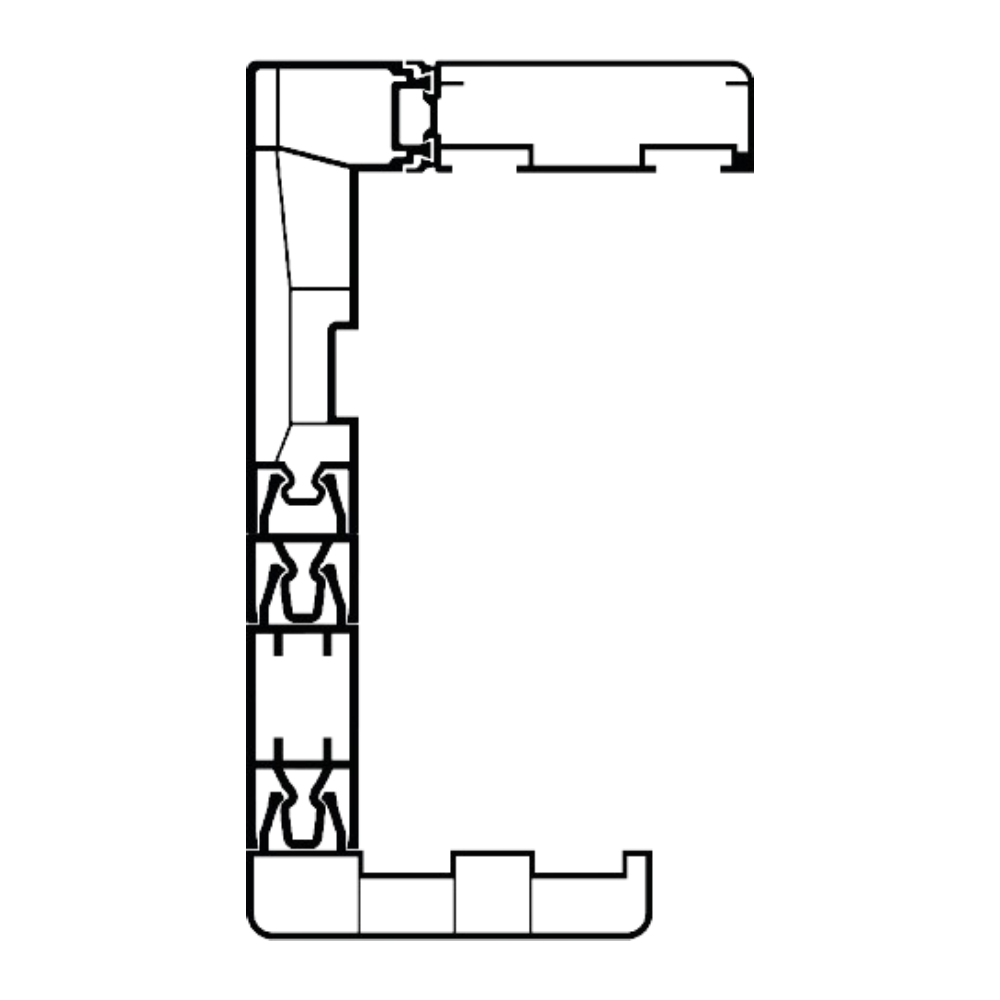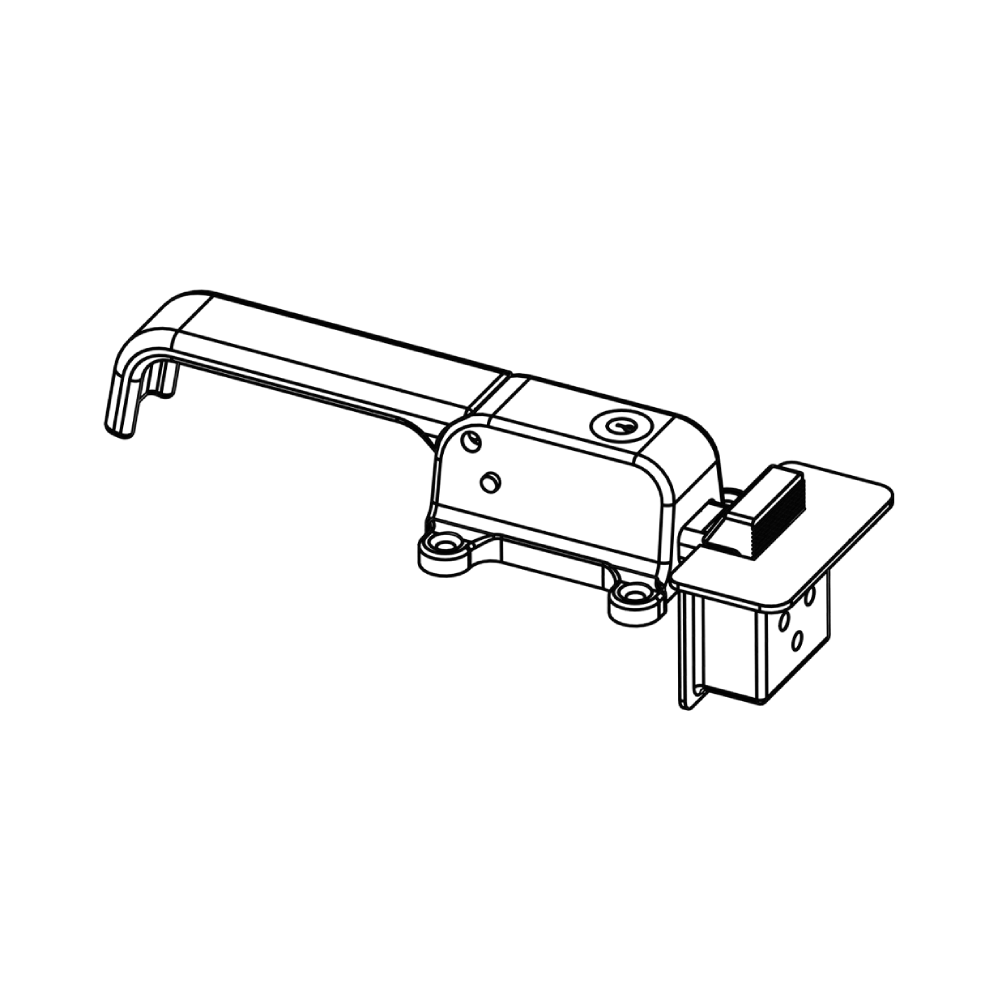Fast Repair Kit: Ways To Reduce Cold Room Door Repair To 30 Minutes
Table of Contents
- The 5-Minute Diagnostic: A Step-by-Step Guide to Identifying Common Cold Room Door Faults
- Is It the Gasket or the Hinge? A Comparative Guide to Quick Fault Diagnosis and Repair
- What Are the 3 Most Critical Components to Check for a Sub-30-Minute Cold Room Door Fix?
- Emergency Seal Replacement: How to Execute a Permanent Fix in Under Half an Hour
- Guide to Proactive Maintenance: 4 Steps to Prevent Cold Room Door Failures Before They Happen
- Manual vs. Automated Door Systems: Which Allows for Faster On-Site Repairs and Reduced Downtime?
The 5-Minute Diagnostic: A Step-by-Step Guide to Identifying Common Cold Room Door Faults
The operational integrity of a cold storage facility is critically dependent on the performance of its cold room doors, where even minor faults can lead to significant energy loss and compromised product quality. The 5-Minute Diagnostic guide provides a systematic framework for industrial engineers to conduct a rapid and accurate fault identification process, transforming a traditionally time-consuming task into a streamlined operational procedure.
This guide begins with a visual inspection protocol focusing on the door seal, or gasket, checking for visible wear, cracks, or permanent deformation that breaks the thermal barrier. The methodology includes the simple "dollar bill test" to verify seal compression integrity, a practical step that prevents costly thermal inefficiency. The next phase involves assessing the mechanical components, including hinges, tracks, and the door panel itself for any misalignment or physical damage that could impede smooth operation.
For facility managers, the guide’s primary commercial benefit is the drastic reduction in energy consumption. A faulty door seal can result in constant infiltration of warm, moist air, forcing the refrigeration system to work overtime and spike operational costs. By enabling early detection, the diagnostic directly contributes to lower utility expenditures and enhanced operational efficiency.
Product managers at İmamoglu appreciate that this diagnostic tool empowers maintenance teams, reducing dependency on external specialists for initial assessments. The guide standardizes the evaluation process, ensuring consistent performance metrics across multiple sites and facilitating data-driven decisions for maintenance scheduling and capital planning. This proactive approach minimizes unplanned downtime and extends the asset's lifecycle.
The technical application extends to verifying the automatic door closure mechanism and safety features, which are vital for both personnel safety and temperature control. A door that fails to close completely poses a significant risk. The step-by-step nature of the İmamoglu guide ensures that all critical functional parameters are checked methodically within the short timeframe, providing a clear action plan for either immediate rectification or escalation for specialized repair.
Is It the Gasket or the Hinge? A Comparative Guide to Quick Fault Diagnosis and Repair
In high-value industrial applications, unplanned equipment downtime represents a significant financial and operational risk, demanding rapid and accurate fault diagnosis. The recurring challenge of seal failure on access points, such as doors and panels, often presents a diagnostic dilemma: is the issue a compromised gasket or a misaligned hinge? Misdiagnosis leads to unnecessary parts replacement, extended downtime, and repeated failures, eroding operational efficiency and maintenance budgets.
The methodology presented in the İmamoglu comparative guide provides a systematic root cause analysis framework that moves beyond symptomatic treatment. By focusing on the mechanical integrity of the entire sealing system, engineers can distinguish between material degradation of the gasket and systemic issues caused by hinge wear or improper load distribution. This approach minimizes diagnostic time and ensures that repairs address the fundamental cause, not just the visible symptom.
For product managers, this guide translates into tangible commercial benefits, including reduced total cost of ownership for critical assets and enhanced product reliability. By embedding these diagnostic protocols into maintenance documentation, companies can empower their field teams with a standardized predictive maintenance strategy. This proactive stance prevents minor issues from escalating into major failures, protecting the structural integrity of enclosures in harsh environments.
The practical application of this guide is evident in scenarios involving environmental sealing for electrical cabinets or processing equipment. A systematic check of hinge alignment and mounting point stress before replacing a gasket can reveal underlying problems with the frame or installation, leading to a more durable and effective repair. This level of technical analysis ensures long-term performance and compliance with industry standards, making it an indispensable tool for commercial decision-makers focused on lifecycle value.
What Are the 3 Most Critical Components to Check for a Sub-30-Minute Cold Room Door Fix?
In high-stakes industrial environments where temperature integrity is paramount, achieving a sub-30-minute cold room door fix is not merely a convenience but a critical operational necessity. The first and most vital component to inspect is the door gasket sealing system. A compromised gasket, often due to wear, tear, or hardening in low temperatures, is the primary source of energy loss and temperature fluctuation. A rapid diagnostic involves a simple visual inspection for visible tears and the "dollar bill test" to check compression. The İmamoglu design philosophy prioritizes gaskets with robust material durability, ensuring a pliable seal that maintains its integrity under constant thermal cycling, which is essential for minimizing energy efficiency degradation.
The second critical component is the hardware and hinge mechanism. Misalignment is a frequent culprit for door failure, leading to excessive strain on the gasket and the door panel itself. Technicians must check for loose mounting bolts, worn hinge pins, and any sagging that prevents a flush closure. The engineering behind İmamoglu hinges incorporates self-lubricating bearings and corrosion-resistant coatings, allowing for smooth operation and reducing the frequency of preventative maintenance interventions. A swift adjustment or tightening here can often restore perfect alignment, directly impacting the system's thermal performance.
Finally, a thorough assessment of the door's safety features, particularly the release mechanism, is non-negotiable. In the event of an accidental lock-in, a fully functional internal release is a legal and ethical imperative. This check verifies that the mechanism is unobstructed, clearly marked, and operates smoothly without requiring excessive force. Integrating this verification into the standard repair protocol underscores a commitment to operational safety. Furthermore, evaluating the overall structural integrity of the door panel for core damage or insulation breakdown is crucial, as any compromise can lead to persistent condensation issues and ice formation.
For product managers and commercial decision-makers, the value proposition of a system designed for such rapid repair is clear. It translates directly into reduced downtime, lower labor costs, and preserved inventory quality. The focus on these three components—gasket, hinges, and safety—creates a streamlined diagnostic troubleshooting protocol that maximizes asset uptime. Specifying doors with these easily serviceable features, like those from İmamoglu, is a strategic investment in operational reliability, ensuring that minor issues can be resolved swiftly before they escalate into major, costly failures that disrupt the entire cold chain.

Emergency Seal Replacement: How to Execute a Permanent Fix in Under Half an Hour
Unplanned equipment downtime represents a significant operational expense in industrial settings, where the failure of a single mechanical seal can halt an entire production line. The conventional repair process is often protracted, involving system shutdown, disassembly, and waiting for replacement parts, leading to substantial downtime costs. The methodology of Emergency Seal Replacement offers a paradigm shift, enabling a permanent fix in under thirty minutes.
This advanced procedure is not a temporary patch but a complete, engineered solution that restores full system integrity. It leverages specialized composite polymers and application techniques designed for high-pressure and high-temperature environments. The core of the process involves a meticulous surface preparation protocol, ensuring optimal adhesion and performance of the sealing material on substrates like stainless steel or specialized alloys.
The primary commercial advantage is the dramatic reduction in mechanical downtime. By executing a repair in under half an hour, facilities can avoid hours or even days of lost production, directly protecting revenue streams. This approach enhances operational efficiency by minimizing disruption and allowing maintenance teams to address failures during planned breaks or with minimal impact on output.
Applications for this rapid repair technology are extensive across critical industries. In chemical processing plants, it can seal leaking pumps handling aggressive fluids, preventing hazardous spills and ensuring environmental compliance. Within water treatment facilities, it restores the sealing integrity of mixers and agitators, maintaining treatment cycles without interruption. The technique is equally effective for rotating equipment such as compressors and centrifuges.
The technical superiority of the sealing solution is validated by its exceptional material properties, including high compressive strength and superior chemical resistance. These properties guarantee that the repair withstands operational stresses, making it a permanent fix rather than a recurrent problem. The technology from İmamoglu is engineered for reliability, providing a robust, long-lasting seal that meets the demands of continuous operation.
Implementing this emergency protocol transforms maintenance from a reactive cost center into a strategic asset. It empowers organizations to maintain aggressive production schedules, reduce inventory costs for spare seals, and improve overall plant reliability. The ability to execute a permanent repair so swiftly represents a significant competitive advantage in today's fast-paced industrial landscape.
Guide to Proactive Maintenance: 4 Steps to Prevent Cold Room Door Failures Before They Happen
The operational integrity of cold storage facilities hinges on the reliability of their most frequently cycled component: the cold room door. Unplanned downtime due to door failure results in significant energy loss, product spoilage, and compromised temperature integrity, directly impacting profitability. A strategic shift from reactive repairs to a proactive maintenance protocol is not merely a best practice but a critical commercial imperative for asset management.
This guide outlines a systematic, four-step framework designed to prevent failures before they occur. The initial phase involves a detailed condition monitoring regimen, focusing on the regular inspection of seals, hinges, and electrical components for early signs of wear or misalignment. This data-driven approach allows maintenance teams to track performance degradation over time, moving beyond subjective assessments to objective, actionable insights.
The second step emphasizes the importance of a scheduled preventative maintenance schedule, which includes lubrication of moving parts, calibration of safety mechanisms, and verification of door alignment. Adherence to a disciplined schedule ensures that minor issues are corrected during planned stoppages, thereby avoiding catastrophic failures during peak operational hours. This systematic approach directly enhances operational efficiency by minimizing disruptions.
Step three integrates advanced predictive analytics where feasible, utilizing sensor data to monitor cycle counts, motor load, and seal integrity. By analyzing trends, the system can forecast potential component failures, allowing for preemptive parts ordering and maintenance scheduling. This level of foresight is a cornerstone of modern asset management, transforming maintenance from a cost center into a value-protecting function.
The final step involves comprehensive staff training and the creation of clear standard operating procedures to ensure consistent door handling and reporting. Proper thermal insulation performance is only sustained when the door is operated correctly. Implementing this holistic guide, supported by robust components from manufacturers like İmamoglu, establishes a resilient operational framework that safeguards against unexpected downtime and optimizes long-term lifecycle cost.
Manual vs. Automated Door Systems: Which Allows for Faster On-Site Repairs and Reduced Downtime?
The debate between manual door systems and automated door systems often centers on upfront cost, but for operations where uptime is critical, the calculus shifts dramatically toward long-term operational efficiency and downtime minimization.
Manual systems, characterized by their mechanical simplicity, offer a distinct advantage in terms of repairability. A malfunctioning hinge or damaged panel can often be addressed immediately by on-site maintenance staff using standard tools and components, leading to rapid resolution. The absence of complex control systems, motors, or sensors eliminates diagnostic delays and the potential need for specialized technicians.
Conversely, automated doors provide superior throughput and environmental sealing, yet their complexity inherently increases vulnerability. A fault in a photo-eye sensor, drive motor, or logic board can halt operations entirely. While modern systems feature diagnostic LEDs and error codes, resolving these issues frequently requires specific technical expertise and proprietary replacement parts, which may not be locally available, extending the mean time to repair (MTTR).
The choice profoundly impacts a facility's lifecycle cost. In harsh industrial environments with high traffic, the mechanical wear on manual doors can lead to more frequent, albeit simpler, repairs. Automated systems, while requiring less physical effort, incur costs associated with preventive maintenance contracts and the risk of complex, high-cost failures.
For applications demanding maximum reliability in remote locations or continuous processes, the simplicity of a robust manual door from a manufacturer like İmamoglu can be the most strategic choice. In high-frequency access points within controlled environments, the productivity gains of automation may justify the investment in advanced support infrastructure and predictive maintenance protocols to preempt failures.
The decision hinges on a granular risk assessment of the specific operational context. Weighing the probability and impact of a failure against the available maintenance resources and the true cost of operational stoppage provides the clearest path to selecting the system that genuinely minimizes downtime.








